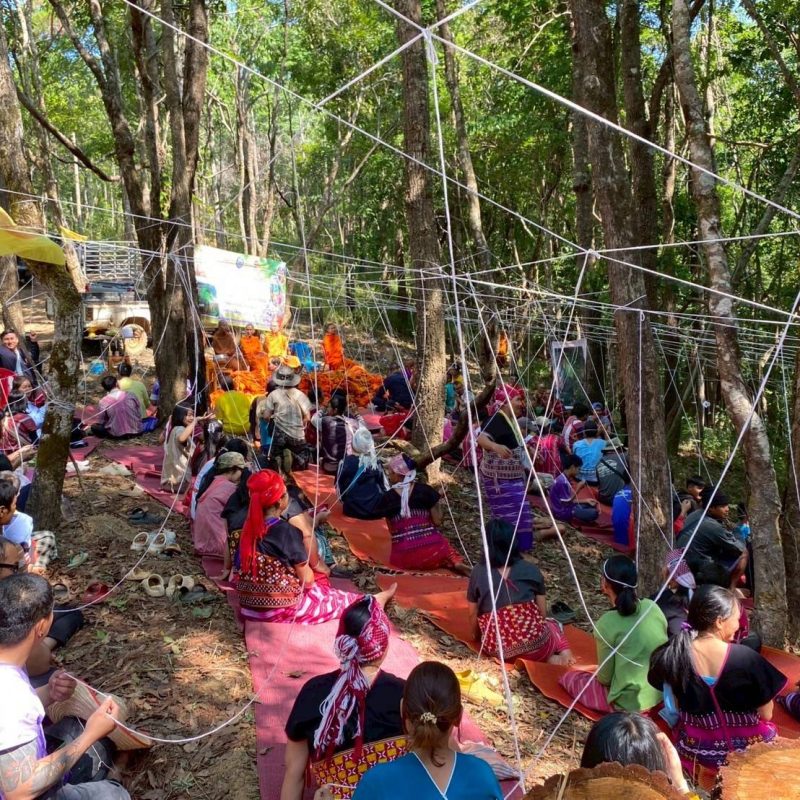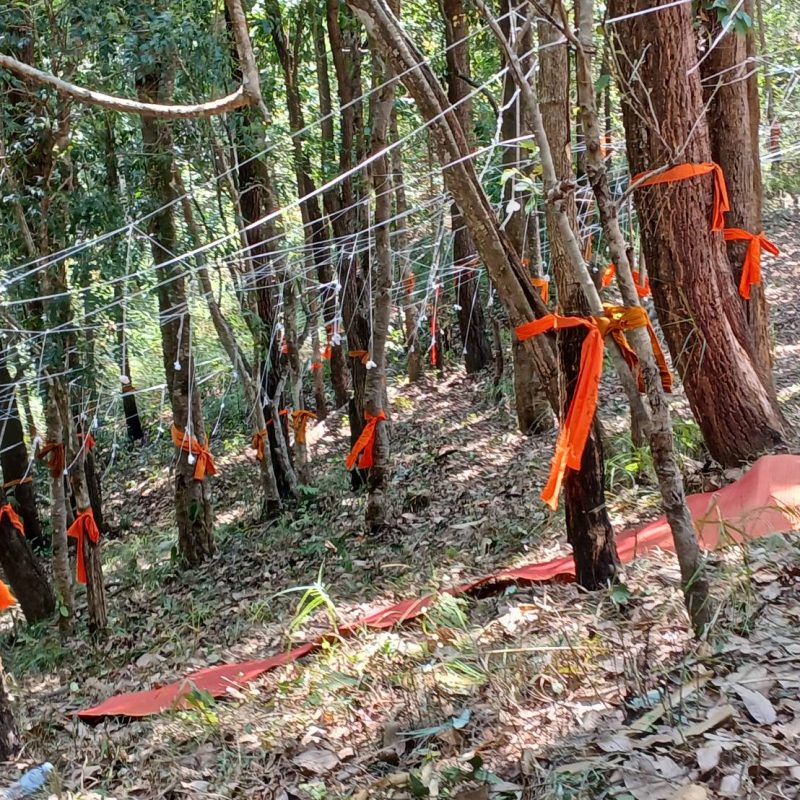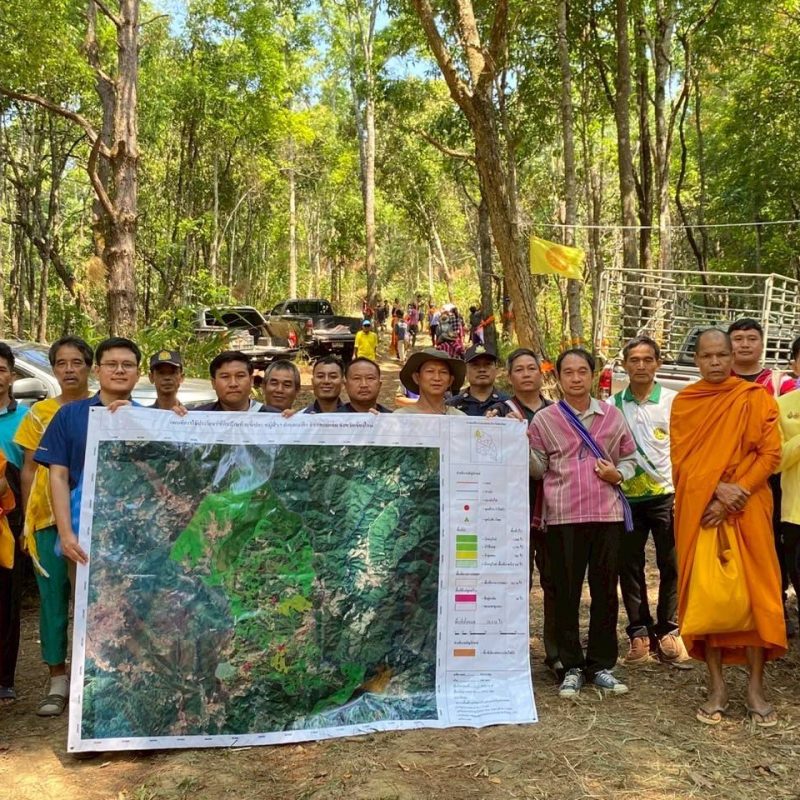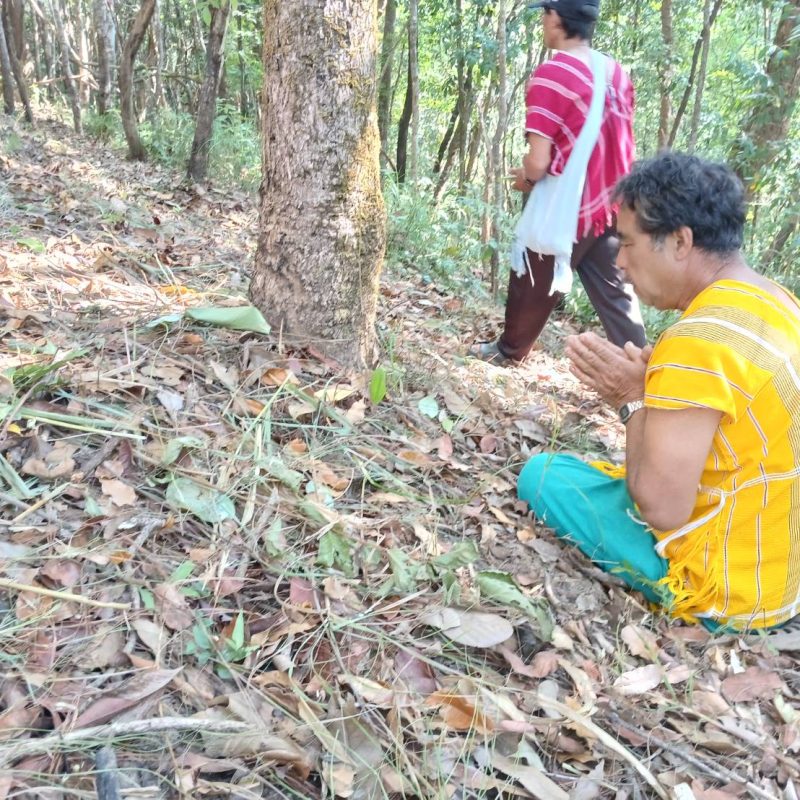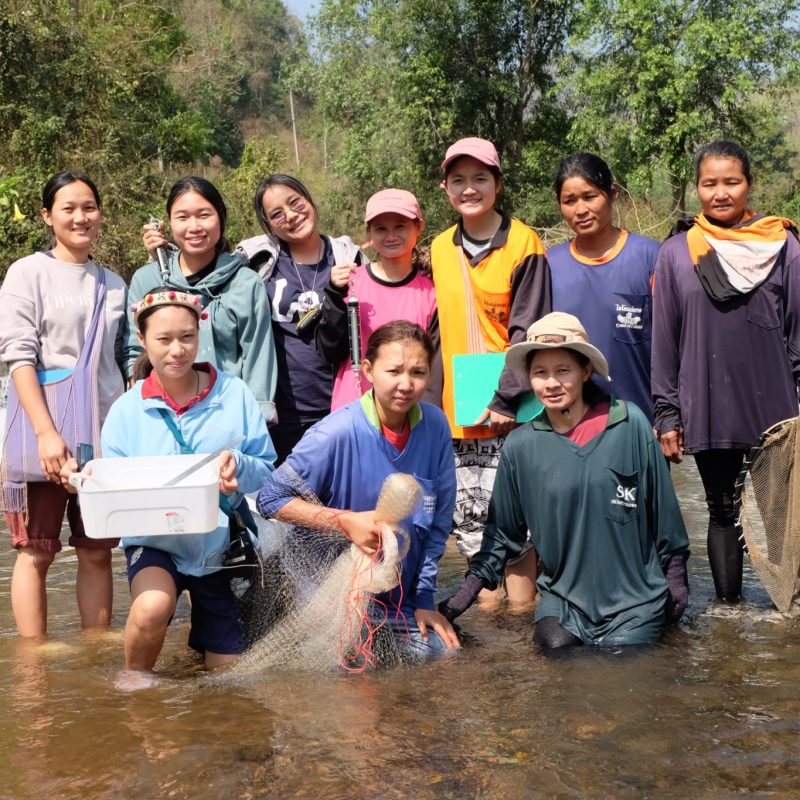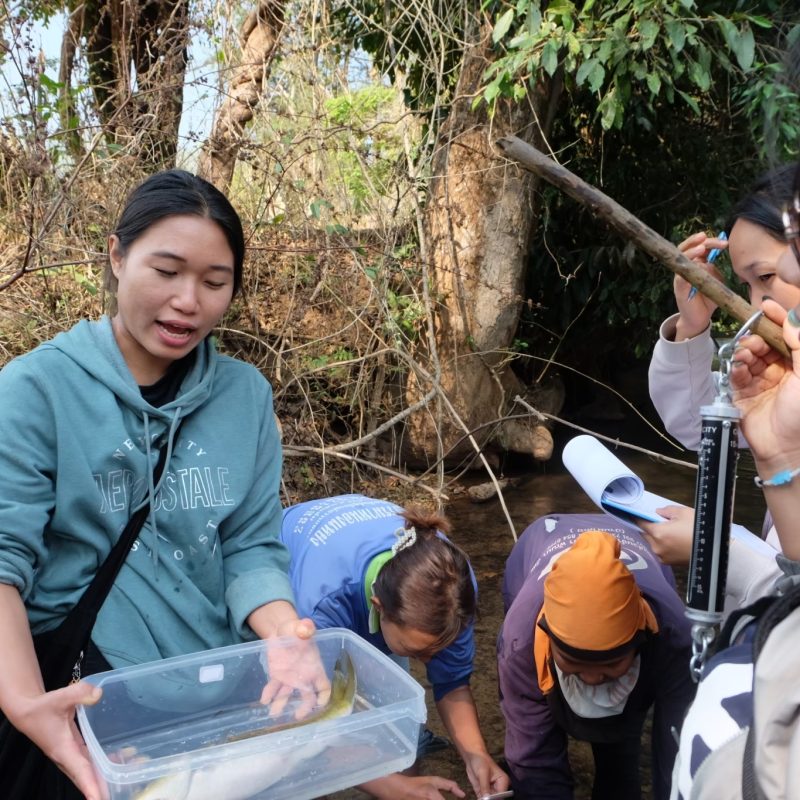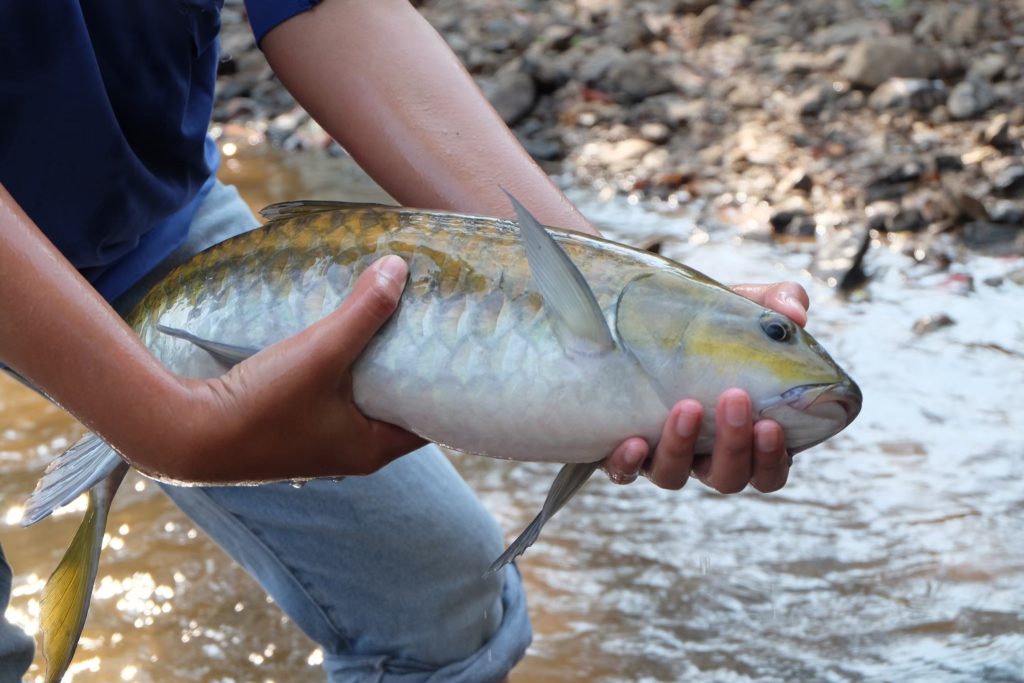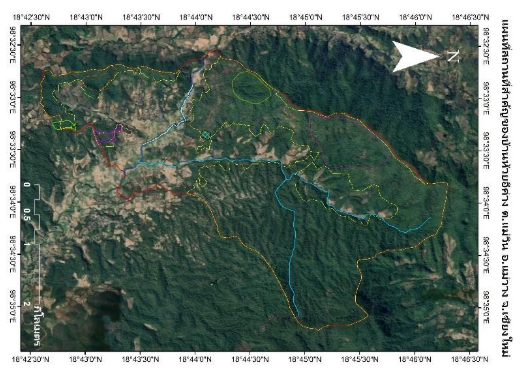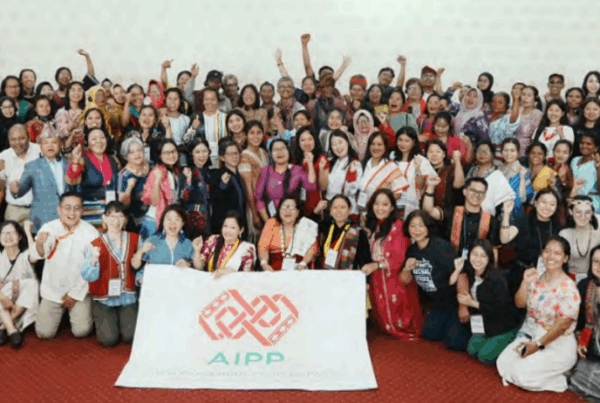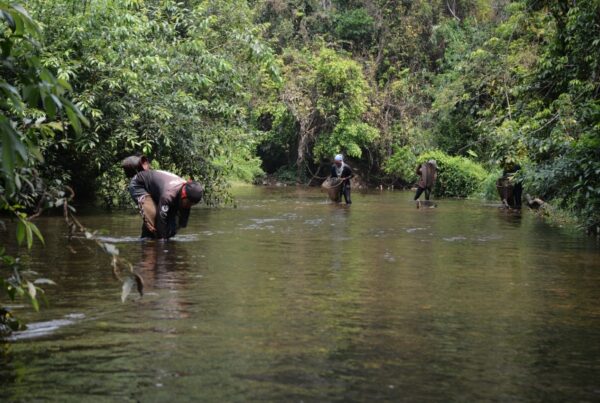When Faith Meets Understanding of Conservation Through the Pgakenyaw Way
The ordination of the forest (Buat Paa) and the ordination of the water (Buat Naam) are not merely rituals involving wrapping trees in saffron robes or performing ceremonies with rivers. Instead, they are profound and intricate strategies that subtly blend belief, faith, and local wisdom with the Pgakenyaw people’s approach to nature conservation.
This is a narrative that speaks of the ancient bond between “people,” “forest,” and “religion,” a bond that persists in many communities, especially those with traditional cultures that rely on the forest as the source of life.
Roots of Faith and Conscience
The essence of forest and water ordination stems from a conservation philosophy intrinsically linked to respecting nature. The Pgakenyaw people perform a ceremony called “Lue Tee Lue Kor,” a ritual offering to and respecting the spirits guarding the forest and water. This ceremony expresses gratitude and reverence to these sacred entities for protecting nature, while also blessing the community with abundant produce, ensuring self-sufficiency in food. Furthermore, it seeks the spirits’ protection against conflict and the disintegration of the community.
Through this mechanism, the Pgakenyaw community communicates to its members and surrounding communities the understanding of these conservation areas, preventing encroachment and fostering collective stewardship of the forests and rivers within these zones. They leverage shared beliefs as a mechanism to build common understanding.
Forest Ordination: Elevating the Forest to a “Sacred Space”
Huai Kee Peu Community in Mae Suek Sub-district, Chiang Mai, is a Pgakenyaw community that continues to preserve its traditional way of life and protect its natural environment. The community has designed and revived forest ordination in their community forest area, drawing on indigenous knowledge and culture. This initiative involves people from different generations working together to develop this space, with the forest ordination covering an area of 800 rai (128 hectares).
The forest ordination ceremony involves blessings and prayers for the forest spirits to protect and care for the area. Community members use monastic robes to wrap around trees, symbolically elevating them to the status of “monks.” When trees or forest areas are draped in these robes, the belief that sacred spirits or tree deities reside within them intensifies, reinforcing the commitment to their care. Villagers within and around the community develop a profound respect, fearing to cut down trees in these ordained areas, believing it to be a sin or an act of destroying sacred life.
This isn’t merely fear; it’s about fostering a collective consciousness within the community to realize the invaluable role of the forests that have sustained their lives. The forest is a source of food, medicine, and headwaters. This ritual emphasizes the understanding that “if the forest thrives, people can thrive.” Furthermore, the community has developed this area into a learning space for knowledge transfer between community elders and youth.
Water Ordination: Water Resource Management by Women and Youth
Pha Lor Pi Community in Mae Suek Sub-district, Chiang Mai Province, is another Pgakenyaw community where groups of women and youth have risen to the task of managing local resources, including the water sources surrounding their community. These groups have collaboratively designed a plan to designate a 3-kilometer stretch of the river as a “Aquatic conservation zone” to preserve the diversity of aquatic life in the area. This also cultivates a shared consciousness for collaboratively caring for the community’s water sources and those of surrounding communities.
This mechanism has been invented, and the women’s and youth groups continue their work by collecting data on aquatic species and assessing the risk of extinction to highlight the responsibilities the group must diligently manage and collaborate on. This includes developing the area into a learning center for transferring knowledge and ideas on resource management to children and youth in the community, fostering a shared sense of responsibility for stewardship in the area.
Beyond Rituals: Towards Collective Action
Forest and water ordinations are not just ceremonies that conclude in a single day; they are the starting point for uniting hearts and taking continuous action. This is a story of “revitalization” from degradation to creating a “way of life” that respects nature, coexists in balance, and proudly passes on these abundant forests to future generations
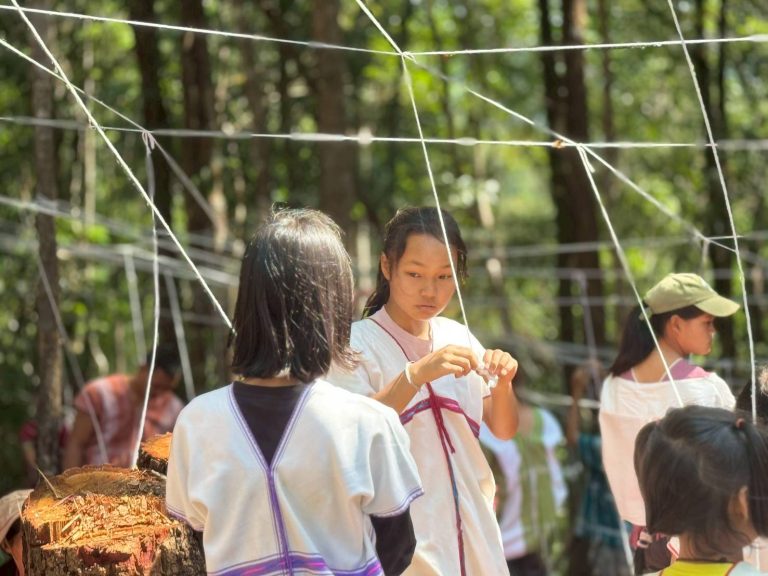
Such practices reflect the wisdom embedded in the Pgakenyaw poem which states:
“Auf hti k’tauz hti, auf kauj k’tauz kauj, Auf deif k’tauz lei, Auf nyaf k’tauz kwiv.”
“Drink the water, care for the water. Eat (from) the land, care for the land. Eating frogs, care for the cliffs. Eating fish, care for the river.”
Type: Blog
Region: Asia
Country: Thailand
Theme: Community-led conservation; Sustainable Livelihoods ; Traditional and local knowledge
Partner: Pgakenyaw Association for Sustainable Development (PASD)


